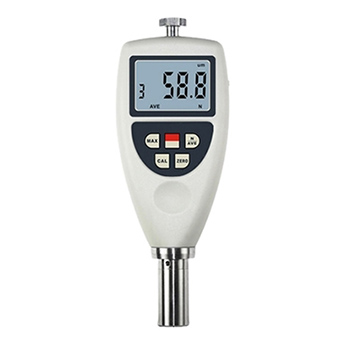Hardness Tester: Features and Using Tips
The hardness tester is a special instrument used to measure the surface hardness of coatings. There are two types of hardness testers: desktop hardness tester and portable hardness tester. Desktop hardness tester is mainly used in laboratory and has the advantage of high precision. Portable hardness tester is used for installed mechanical or permanent assembly parts and is easy to carry. The portable hardness tester integrates portable hardness testers such as Brinell, Rockwell, etc., and can realize the free conversion of 7 different hardness values.
As hardness test is so practical, we need to know about it. Next, we will introduce the main feature and use caution about hardness tester. We hope that this passage can help you how to use a hardness tester.
Main feature
The instrument adopts a unique and precise design in mechanics, optics and light source, which makes the indentation imaging clearer and the measurement more accurate. Both 20x and 40x objective lenses can participate in the measurement, making the measurement range larger and the application wider. The instrument is equipped with a digital display measuring microscope, which can display the test method, test force, indentation length, hardness value, test force holding time, measurement times, etc. on the liquid screen. It has a threaded interface that can be connected to a digital camera and a CCD camera.
Use caution
Hardness testers are used to measure the surface hardness of coatings. The following matters need to be paid attention to when using:
The influence of the steel ball indenter: The diameter of the steel ball indenter increases, and its hardness value decreases, and vice versa. If the steel ball used is small and steel, when the load is applied, the steel ball itself will also have bounce and plastic deformation. It has a great influence on the error of low hardness value. Therefore, the material must be measured under the condition of standard indenter diameter.
Effect of test load force: If the test load force increases, the measured hardness will decrease, otherwise, the hardness value will increase. The Brinell hardness changes with the change of the load force. Practice shows that the relative error of the hardness value is related to the relative error of the load. Therefore, to improve the measurement accuracy of the hardness value, it is necessary to reduce the load error.
For example, the operator operates according to the basic principle of Brinell hardness, and regularly checks and calibrates the Brinell hardness tester to test under the standard conditions of Brinell hardness testing.
The influence of the measuring device: Whether the measuring device is qualified or not and whether the operation of the measuring device is scientific will cause great errors. The Brinell hardness tester must be regularly sent to the metrological verification department for periodic verification, the indenter should be pressed into the sample surface slowly and steadily.
The influence of the temperature change of the sample: The change of temperature will cause the change of the structure of the material, and the test of Brinell hardness is greatly affected by the structure of the material. Therefore, when the temperature of the sample increases, the Brinell hardness value will decrease, and vice versa.
Therefore, the temperature of the sample must be consistent with the temperature of the laboratory. In the actual test work, it need control the ambient temperature and the sample temperature within the required standard test temperature conditions. And then, the measuring personnel must measure the ambient temperature before measuring the hardness value of the sample. If the ambient temperature deviates from the standard ITI when the hardness value is measured, temperature correction must be performed to reduce the error.
Influence of small indentation diameter measurement: According to the calculation formula of Brinell hardness, the indentation measurement error has a great influence on the hardness value error, so the indentation measurement error is the main source of error. If the hardness value is large, the calculated hardness value will be small. In order to reduce the error, the accuracy of the microscope for measuring the diameter of the indentation must be guaranteed. And then, when conditions permit, a larger load force and a larger steel ball should be used for measurement.
Influence of sample quality: The surface roughness, curvature and thickness of the sample will all contribute to the measurement error as the surface roughness has a great influence on the measured indentation size. Generally speaking, the rougher the surface, the lower the measured hardness value will be. If the thickness of the sample is small enough, the measured hardness value will be lower. In this case, the measured value needs to be corrected.

